43 Things That Make Your Home Look Cluttered
Clutter is the silent enemy of a peaceful home. It’s that nagging feeling of chaos that lingers, even when you’ve tidied up. It’s the mental load of too many things vying for your attention. Clutter isn’t just about messy surfaces; it affects our well-being, making it harder to relax, focus, and sleep.
The Problem with Clutter
You’re here because you sense your home could be less cluttered, but maybe you can’t pinpoint the exact causes. This article will help you identify the sneaky things that make your home look cluttered. We’ll go beyond the obvious piles and delve into the subtle culprits contributing to that “cluttered feeling.” And most importantly, we’ll offer practical solutions to help you declutter and reclaim your space.
Clutter Culprits in Every Room
Living Room

1. Too many throw pillows and blankets
Let’s face it: we all love cozying up on the couch, but an abundance of throw pillows and blankets can quickly turn your living room into a textile jungle. Keep only a few that are decorative and functional, and store the extras in a basket or ottoman.
2. Overstuffed bookshelves
While books are a wonderful addition to any home, overflowing bookshelves can create a sense of visual chaos. Donate or sell books you no longer read or consider alternative display options, such as stacking them horizontally or by color.
3. Cords and cables everywhere
In our tech-driven world, it’s easy for cords and cables to take over. Tame the tangle with cord organizers, cable ties, or labels. Invest in wireless charging solutions to minimize visible wires.
4. Piles of magazines and newspapers
It’s tempting to keep that stack of magazines “just in case” you have time to read them, but let’s be honest, it’s probably not going to happen. Recycle old issues regularly and keep only the latest ones or those you plan to read soon.
5. Knickknacks and souvenirs clutter surfaces: “Flat Surfaces Syndrome”
We all have those trinkets and souvenirs that hold sentimental value, but when every flat surface is covered, it creates visual clutter. Embrace the “clear surface rule”—choose a few meaningful items to display and store the rest. Rotate your display items seasonally to keep things fresh and interesting.
6. Oversized or too much furniture
A living room crammed with furniture or dominated by a piece that’s too large can feel cramped and cluttered. Choose furniture that’s appropriately sized for the room and leave plenty of space for movement. Before buying new furniture, measure it and use painter’s tape to visualize how much room it will take up.
Kitchen

7. Appliances and gadgets crowding countertops
That blender you use twice a year? The waffle iron that’s gathering dust? Countertop appliances can be major clutter culprits. Free up valuable space by storing appliances you don’t use daily in cabinets or pantries. Consider donating or selling duplicates or those you rarely use.
8. Overflowing drawers and cabinets
“The Junk Drawer Dilemma.” We’ve all got that one drawer (or more!) where miscellaneous items end up. Tackle the junk drawer dilemma by emptying it completely, categorizing items, and discarding anything broken or unusable. Invest in drawer dividers and organizers to keep things tidy and easily accessible.
9. Mismatched food containers
A jumble of mismatched food containers can make even the most organized kitchen feel chaotic. Streamline your storage by investing in a set of matching containers. Toss any containers without lids or those that are stained or warped.
10. Expired food items
It’s easy for expired food to hide in the back of the pantry or fridge. Make a habit of regularly checking expiration dates and toss anything that’s past its prime. Implement a system for using older items first to minimize waste.
11. Piles of mail and paperwork
“One Touch Rule.” Mail and paperwork have a sneaky way of piling up. Combat this by setting up a designated spot for mail and sorting it immediately. Implement the “One Touch Rule” – handle each piece of mail only once, deciding whether to recycle, file, or act on it immediately.
Bedroom

12. Clothes piled on chairs or the floor
That chair in the corner that’s become a makeshift clothes mountain? It’s time to reclaim it. Make a habit of putting dirty clothes directly in the hamper and hanging up or folding clean clothes immediately. It might be time to declutter if you’re struggling with overflowing closets and drawers. Consider donating or selling clothes you no longer wear or that don’t fit.
13. Overflowing drawers and closets
Cramming clothes into drawers and closets makes it hard to find what you need and creates a sense of chaos. Declutter your wardrobe by removing anything you haven’t worn in the past year. Utilize drawer dividers, shelf organizers, and hanging storage solutions to maximize space and keep things tidy.
14. Too many decorative items
While decorative touches can add personality to your bedroom, too many can make it feel cluttered and overwhelming. Choose a few meaningful items to display and store the rest. Keeping surfaces clear, especially nightstands and dressers, will create a sense of calm and tranquility.
15. Unmade bed
It might seem trivial, but making your bed every morning sets a positive tone for the day and instantly makes your bedroom look more put together. It’s a simple habit that can greatly impact the overall feel of your space.
16. Shoes scattered around
A jumble of shoes by the door or scattered throughout the bedroom can create a cluttered and disorganized feel. Invest in a shoe rack or cubbies to store shoes neatly in the entryway or closet.
Bathroom

17. Expired toiletries and medications
Avoid the “just in case” trap. That half-used bottle of lotion from two years ago? It’s probably time to let it go. Expired products lose their effectiveness and can clutter up your bathroom. Regularly check expiration dates and dispose of expired items safely. Avoid the “just in case” trap and be honest about your needs.
18. Too many towels and bath mats
While having a variety of towels and bath mats is nice, an overabundance can lead to a cluttered linen closet and bathroom. Keep only a few towels and bath mats per person and store the extras in a linen closet or designated space.
19. Half-empty shampoo and soap bottles
Those half-empty bottles lining your shower or bathtub can create visual clutter. Consolidate half-empty bottles or make a conscious effort to use them up before buying new ones.
20. Hair tools and accessories cluttering countertops
Hairdryers, curling irons, brushes, and other accessories can quickly take over your bathroom counter. Utilize drawer organizers or under-sink storage solutions to keep these items tidy and out of sight.
21. Dirty laundry on the floor
A pile of dirty laundry on the bathroom floor is an instant clutter culprit. Place a hamper in a convenient location to make it easy for everyone to keep the bathroom tidy.
Entryway/Mudroom

22. Shoes and coats piled up
The entryway is the first impression of your home, and a mountain of shoes and coats can set a chaotic tone. Invest in a shoe rack or cubbies to keep shoes neatly organized. Hang coats on hooks or in a coat closet to prevent them from cluttering up chairs or the floor.
23. Bags and backpacks are scattered around
Backpacks, purses, and gym bags tend to migrate to the entryway and create visual clutter. Designate a specific spot for bags and backpacks, whether a shelf, hooks, or cubbies.
24. Keys, mail, and other items cluttering surfaces
It’s easy for keys, mail, sunglasses, and other small items to accumulate on entryway surfaces. Set up a key hook or tray, designate a spot for mail, and use baskets or bowls to corral other small items.
25. Umbrellas and sports equipment leaning against walls
Umbrellas and sports equipment propped against walls can make your entryway feel cramped and cluttered. Utilize an umbrella stand and wall-mounted hooks or racks to keep these items organized and off the floor.
26. Pet supplies taking up space
Pet supplies, like leashes, food bowls, and toys, can easily contribute to entryway clutter. Designate a specific area for pet supplies and use baskets or bins to keep everything contained and organized.
Home Office
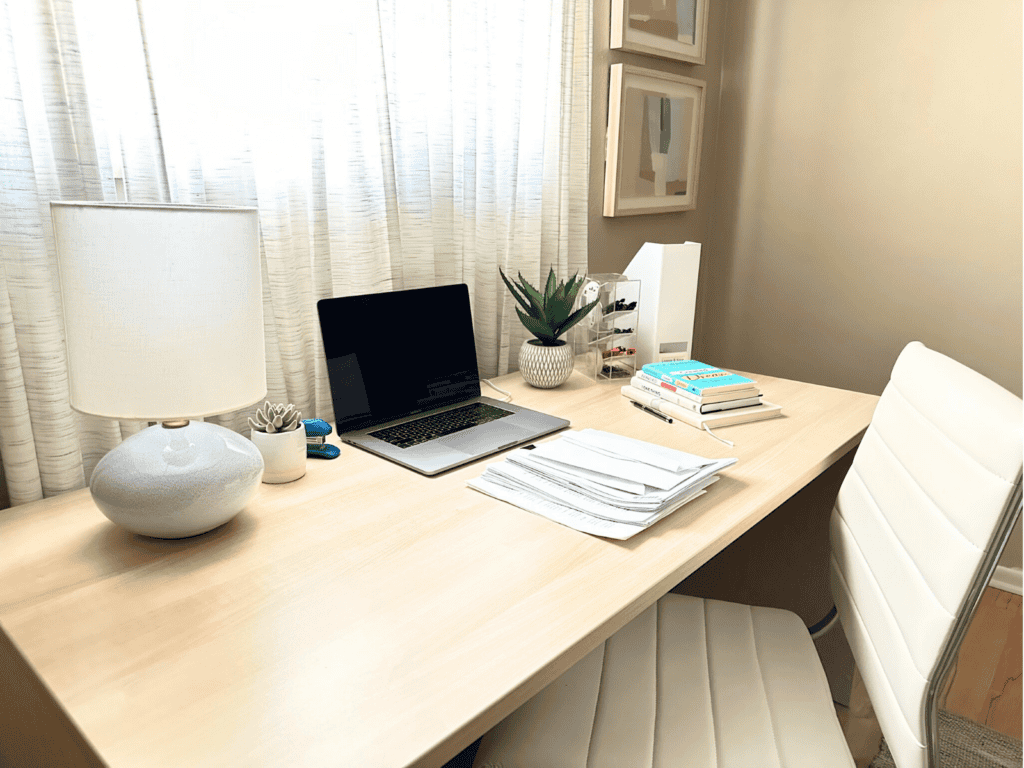
27. Paper piles on every surface
A cluttered desk is the enemy of productivity. Implement a system for sorting and filing paperwork immediately. Use trays, folders, or a vertical file holder to keep important documents organized and easily accessible.
28. Unorganized supplies
Pens, sticky notes, paperclips – these small office supplies can quickly create a sense of chaos if left unchecked. Invest in drawer organizers, pen cups, and other storage solutions to keep your supplies tidy and within reach.
29. Tangled cords and cables
Cords and cables can create a visual mess in your home office, like in the living room. Use cord organizers, cable ties, or labels to keep them tidy and hidden. Consider a wireless keyboard and mouse to further reduce cord clutter.
30. Unused electronics and equipment
That old printer you never use or the outdated computer monitor taking up space? It’s time to say goodbye. Donate or recycle unused electronics and equipment to free up valuable space in your home office.
31. “The ‘Work in Progress’ Pile-up”
Unfinished projects and stacks of papers can create a sense of overwhelm and hinder productivity. Create a system for managing ongoing projects using project folders or a digital task management tool.
32. “The ‘Just in Case’ Supplies”
It’s tempting to stock up on office supplies “just in case,” but an overabundance can lead to clutter. Be realistic about your needs and avoid overbuying.
Other Clutter Culprits
Sentimental Items

33. Old toys and stuffed animals
Childhood treasures hold precious memories, but holding onto every item can lead to overwhelming clutter. Keep a few cherished items that spark joy and consider donating the rest to charity or passing them on to family or friends who might appreciate them.
34. Inherited items you don’t use
While inheritances can be meaningful, it’s okay to let go of items that don’t fit your lifestyle or taste. If you don’t love or use an inherited item, consider selling it or donating it to someone who will appreciate it.
35. Gifts you don’t like
Don’t feel obligated to keep gifts that don’t resonate with you. Donating or re-gifting them to someone who will genuinely enjoy them is okay.
36. Children’s artwork and school projects
Children’s creativity is precious, but it can also lead to an abundance of artwork and school projects. Take photos of these creations to preserve the memories and keep a few special pieces.
37. “Too Many Collections” Conundrum
Collections can add personality to your home, but an overabundance can create visual clutter. Curate your collections by displaying a few favorite pieces and rotating them periodically to keep things fresh.
Digital Clutter: “The Digital Overflow”

38. Thousands of unread emails
A cluttered inbox can create a sense of overwhelm and anxiety. Unsubscribe from unwanted emails, set up filters to organize incoming messages, and schedule time to go through your inbox and delete or archive old emails. Regularly delete old files and photos and unsubscribe from email lists you no longer read.
39. Files and photos scattered across devices
Digital clutter can be as overwhelming as physical clutter. Consolidate files and photos in a cloud storage service or external hard drive. Delete duplicates and organize files into folders for easy access.
40. Unused apps and subscriptions
Unused apps and subscriptions take up valuable storage space and can drain your wallet. Review your apps and subscriptions regularly and delete or cancel those you no longer use.
Mental Clutter: “The Emotional Clutter Connection”

41. To-do lists and unfinished projects
A never-ending to-do list can create mental clutter and anxiety. Break down large tasks into smaller, more manageable steps to avoid feeling overwhelmed. Set realistic deadlines and prioritize your to-do list.
42. Unresolved conflicts and negative emotions
Unresolved conflicts and negative emotions can contribute to mental clutter and unease. Address conflicts directly and seek professional help if needed. Practice mindfulness and self-care to manage negative emotions. Clutter can often be tied to unresolved feelings, so acknowledging this connection can make decluttering easier.
43. Information overload
The constant stream of news and social media can lead to information overload and mental fatigue. Limit your exposure to these sources and take regular breaks from technology. Engage in activities promoting relaxation and focus, such as reading, time in nature, or meditation.
Remember, decluttering isn’t just about tidying up your physical space; it’s also about creating a sense of calm and clarity in your mind.
General Decluttering Tips

Donate or sell items in good condition
Decluttering doesn’t mean sending everything to the landfill. You can donate gently used items to charity or sell them online or at a consignment shop.
“Small Steps, Big Impact”
Decluttering can feel overwhelming, but it mustn’t be an all-or-nothing endeavor. Start small by focusing on one area or room at a time. Set a timer for 15 minutes each day and tackle a manageable chunk of clutter. You’ll be amazed at how much you can accomplish with consistent effort.
Get rid of anything you haven’t used in the past year
If you haven’t used an item in the past year, it’s likely taking up valuable space without adding value to your life. Be honest with yourself and let go of things you no longer need or use.
Create designated spaces for everything
“A place for everything, and everything in its place” is a decluttering mantra for a reason. When every item has a designated home, keeping things organized and preventing clutter from building up is easier.
Implement a “one in, one out” rule
To prevent clutter from creeping back in, adopt a “one in, one out” rule. Eliminate something else for every new item you bring into your home.
“The Power of Empty Space”
Don’t be afraid of empty space. Embrace it! Empty space creates a sense of calm and spaciousness, allowing your eyes to rest and your mind to relax.
Your Questions Answered

How often should I declutter?
Declutter frequency depends on your lifestyle and how quickly clutter accumulates in your home. Aim for a major decluttering session at least twice yearly, perhaps seasonally, to coincide with spring cleaning or preparing for the holidays.
You may also want to plan a weekend decluttering project every few months to tackle specific areas or categories of items. Additionally, incorporate smaller decluttering tasks into your regular cleaning routine to prevent clutter from building up.
Consider a quick “10-minute tidy” each day to address any immediate messes or misplaced items. This proactive approach can make the larger decluttering sessions less overwhelming and help maintain a more organized living space year-round.
But what if you’re struggling with where to even begin? This post, “Breaking Free: Essential Decluttering Tips For Hoarders,” offers a step-by-step guide to decluttering for hoarders, with compassionate advice and actionable tips to help you break free from the clutter.
What if I have trouble letting go of sentimental items?
Letting go of sentimental items can be challenging. Start by asking yourself if the item truly sparks joy or is holding you back. Consider taking photos of sentimental items to preserve the memories without keeping the physical object.
How can I prevent clutter from building up again?
The key is to be mindful of what you bring into your home. Avoid impulse purchases and regularly declutter to keep things under control. And, if you find yourself slipping back into old habits, don’t be afraid to revisit challenges like our 100 Things to Declutter challenge to get back on track!
Can decluttering improve my mental health?
Yes, according to WebMD, decluttering has been linked to reduced stress, improved focus, and increased productivity. A clutter-free environment can promote a sense of calm and well-being.
Where can I donate my unwanted items?
Many organizations, such as Goodwill, The Salvation Army, and local shelters, accept donations. Research options in your area to find the best fit for your items.
How can I objectively view my clutter?
Use “The Guest Perspective.“ Invite a trusted friend or family member to give you honest feedback on what areas of your home feel cluttered. A fresh perspective can be incredibly helpful in identifying problem areas you might have overlooked.
Conclusion
Remember, decluttering is a journey, not a destination. It’s about creating a home that supports your well-being and reflects your values. By tackling the clutter culprits in each room and implementing simple decluttering habits, you can transform your space into a haven of peace and tranquility. So, take a deep breath, start small, and enjoy the process of creating a home that truly feels like yours.
Ready to take the first step? Download our free 30-day declutter challenge printable and start your journey to a clutter-free home today! No sign-up is required. Just grab the printable and create a home that inspires joy and peace.


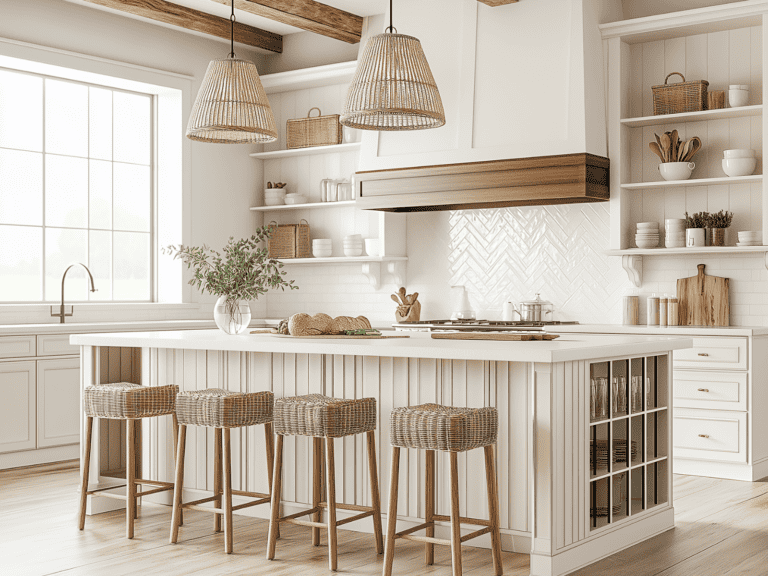
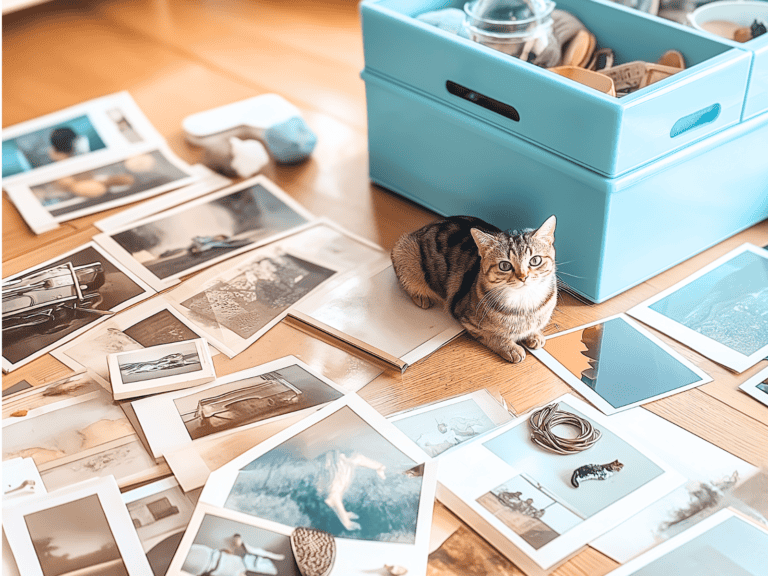

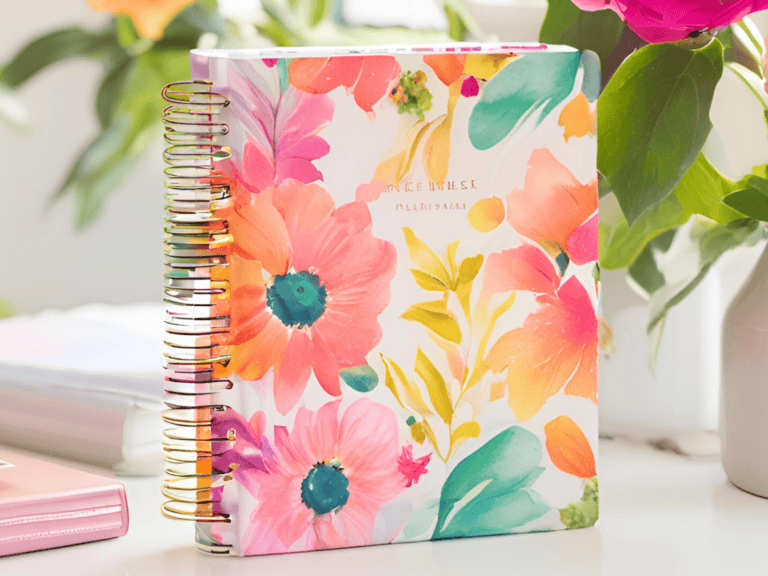

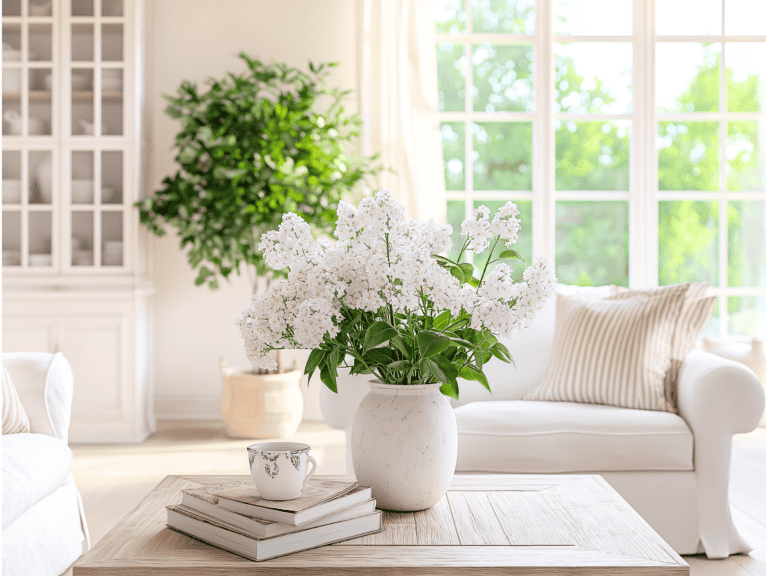
I needed this today! Thank you! My brain has been on overload! I agree with all of these and try to practice them. But it helped me realize I need to get the mental clutter gone.